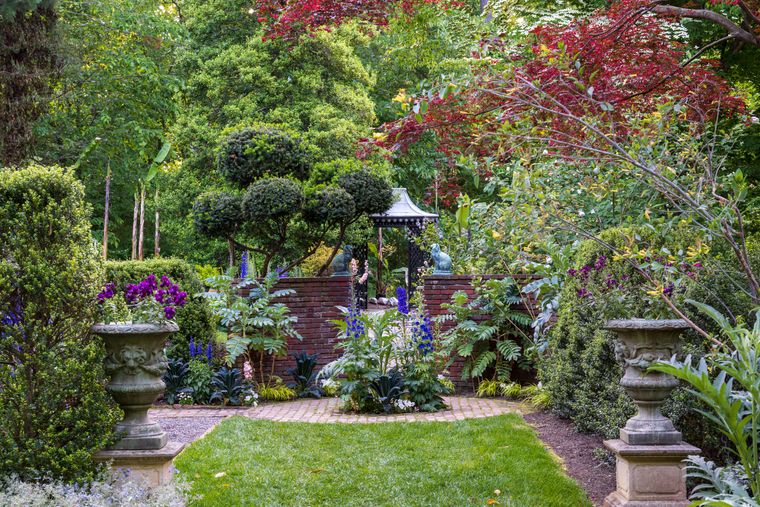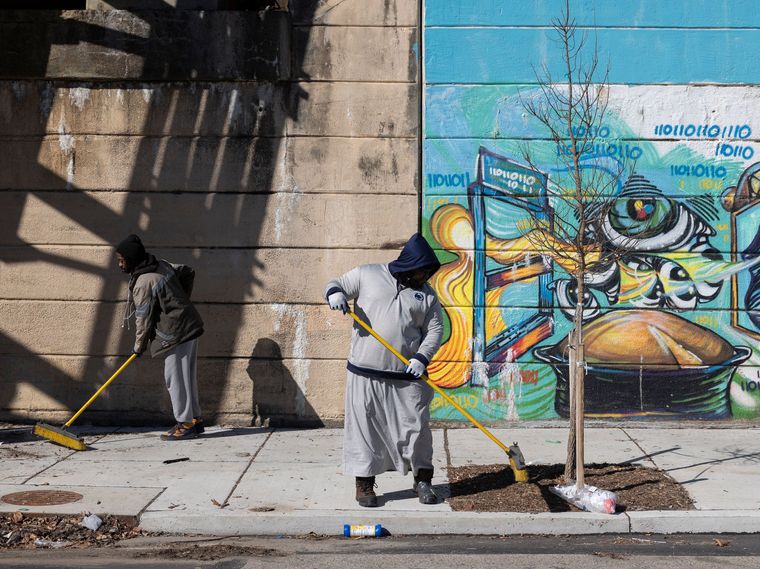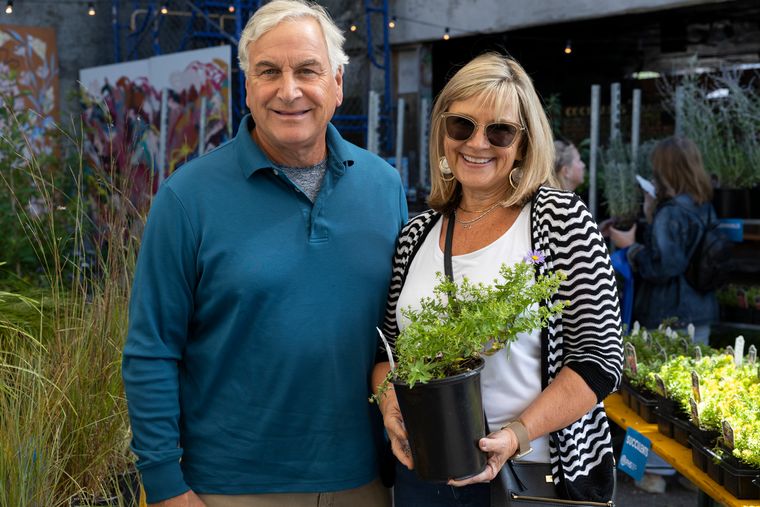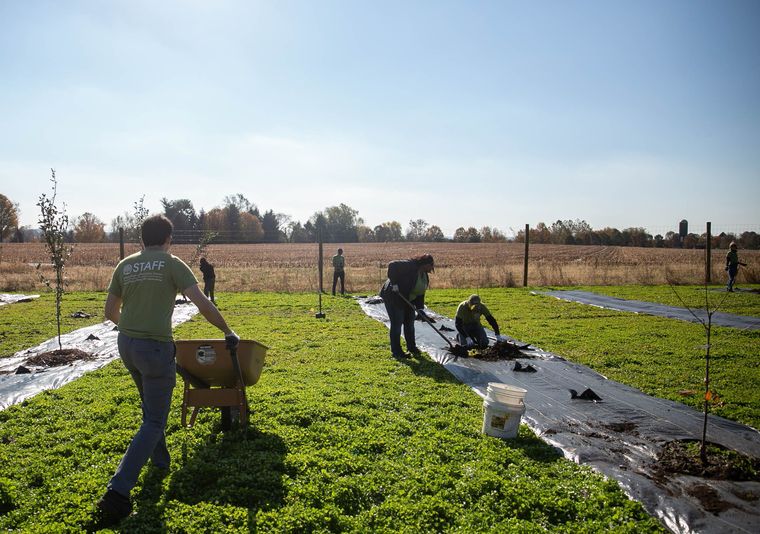



May Gardening Tips: Your Monthly Checklist
plant care
seasonal tips

By Sally McCabe, Associate Director of Community Education
May is a month for big chances and bigger changes in the garden. We’re right on the cusp of the frost/no-frost divide. To help you navigate, let’s divide the month into three time periods: early May (cool soil and cool-season crops), late May (warm soil and summer vegetables), and Mother's Day, which has its own rules.

Early May Gardening: Cool-Season Crops, Soil Prep, and Perennials
This is that awkward time when it's almost too late to plant your cool season crops like lettuce, spinach, all of your cabbage families, and your spring root crops like radishes and turnips, so run out and chance one more crop of lettuce and spinach.
Don’t Plant Tomatoes Yet
Hold off on the tomatoes. Night temperatures are still keeping soil temperatures at less than ideal for tomatoes and peppers. Naked Gardening day is the first Saturday in May, so be reminded---if the soil is too cold for your butt, it's too cold for tomatoes!
Join our community! Sign up for expert-led Know to Grow webinars and enhance your gardening skills.
Sow Seeds Anyway
It may be too early to plant your warm season transplants like peppers, squash, and all those other forbidden things, but go ahead and stick whatever seeds you want into the ground and let them sort themselves out.
Watch for Cabbage Butterflies
Get ready for the butterflies! For butterfly enthusiasts, the most plentiful butterfly out there right now is that flighty little white one, the cabbage butterfly (Pieris rapae), which is flitting gaily thru the garden, gently touching down between the flowers and everything in the cabbage family. Much as I admire its seemingly carefree beauty, I know that each delicate touchdown leaves an egg that turns into a green worm with the potential of devastating my garden. Bring out the row covers to keep them away, and the BT (bacillus thuringiensis) organic spray for the ones that sneak through.
Plant Food for the Butterflies
Butterflies are an indicator species; their highly visible health (or lack thereof) is waving a flag about what’s going on more quietly in the environment. Many flowers attract them, but only a few flowers feed their young. Add butterfly-friendly plants to your garden by planting milkweed seeds or other plants for the monarchs. Swallowtails will feed on any of the umbelliferous herbs (the ones that get umbrella-shaped bunches of flowers). Transplant parsley or rue from plants, but sow seeds for fennel, dill, and carrots.
Divide and Replant Perennials
Everything healthy eventually gets too crowded and uses up the available space and nutrients in the soil. Many perennials, including daylilies, rudbeckia, echinacea, fall asters, shasta daisies, chrysanthemums and phlox benefit from being divided. Dig up the clumps, then split into quarters with a shovel or ax. Enrich the soil with compost and reset one of the reduced clumps; move the rest of them around the garden or share with gardening friends.
Prune Azaleas
Because they are a spring-blooming shrub, azaleas set their flower buds in the fall. This means you can shape them now, as soon as they’re done blooming and before their crazy summer growth starts. Cut them to fit the space where you want them but try to do it without turning them into poodle shapes. And while you’re up close and personal with the pruners, check for cottony azalea scale on the undersides of leaves and on stems. Spray with neem oil to smother them while they are still in the moving-around stage, before they get comfy inside their hard shells.
Set Up and Clean Rain Barrels
It used to be “April Showers…etc.,” but now that the weather patterns have declared their independence from all the rules, let’s get our reserves in order. Buy or build a rain barrel to connect to your rainspout. Connect several so you can be assured of enough water to get your garden through the dry spells that are sure to come.
Now is also a good time to clean out water barrels. Give everything a good scrub to get rid of residual algae. I use a toilet brush, since it has a long handle to get down into barrels. I prefer elbow grease, and sand or hay as a scrubber if I can't find my brush. If you feel the need to use a little soap, be sure to rinse well; dump out rinse water into the driveway or somewhere you're trying to kill ivy, since soap is seriously alkaline. I've noticed that there are already mosquito wigglers in barrels, buckets and other reservoirs I've filled since winter, so get out there and clean out anything else that holds water.

What to Plant in Late May: Tomatoes, Transplants, Mulching, and More
As we transition from cool to warm, mulch the roots of your cool-season vegetables to insulate their roots from the advance of the warmer weather.
Plant Warm-Season Vegetables
The night temperatures are warm enough to plant most of your vegetable seeds. If you’re putting in transplants, though, make sure you’ve hardened them off beforehand; accustom them to the increased light and decreased temps of the great outdoors by putting them in a sheltered place for a day or two outside, before sending them out into the cruel world. Water the little transplants well before putting them into the ground, (I dip them in a bucket) and remember to remove any flowers or fruit so they can concentrate on putting down strong roots before bearing fruit.
Plant Tomatoes
I know this is pretty anti-climactic by now, but the ground should be warm enough for tomatoes and other warm season transplants like eggplants, peppers, squash and even basil. Snip or pinch off the small fruits, flowers and buds to encourage root growth before fruit growth.
Water Wisely
May in the Philly area is either feast or famine in the rain department. Plants want about an inch of rain every week, so be ready to supplement when that doesn’t happen. This is especially true with newly planted trees and shrubs, which are putting out new tender shoots and roots that are easily damaged by dry conditions, and with vegetable gardens. Social watering (standing there sprinkling things while you talk to your neighbors) is not enough; learn to read the soil with your fingers to see if there is moisture below the surface. It’s amazing how long you can stand there watering, only to find that everything down an inch is bone dry. Give the ground a good soak. If you must wet the leaves, try to do it early in the day, before the full sun hits and can burn them; wetting leaves in the evening sets up perfect conditions for molds and mildews. Given the choice, though, between watering in the evening or not at all, take your chances with the molds.
Pinch Back Annuals
By now, the ground should be warm enough to chance putting annuals in the ground. But here’s the hard part: once you get them organized and placed where you want them, you need to snip or pinch off all the flowers and buds. Just do it! This really makes the plant concentrate on putting down roots first, instead of ripening up seeds (which is what the flowers are for in the first place). Removing the flowers also makes them anonymous for a week, and less attractive to small hands picking flowers for Mom on Her Big Day.
Mother's Day Gardening: Flowers and Family Traditions
Get Mom Some Flowers
Run out and find one of those ephemeral spring apparitions that pop upon this day called a plant tent, and get some beautiful flowers for Mom. Then go out the day after and see if you can't swing a deal for a mess of the leftover Mother's Day plants and plant them out in your garden.
Help Mom in the Garden
Sure, a handful of cut flowers is lovely, but nothing says “I love you” like a couple hours of help in the garden. Plant Mom some flowers. They last a lot longer and she’s not stuck with yet another vase.
Surprise Mom with a PHS Membership to enjoy discounts on Flower Show tickets, educational programs, and more.


